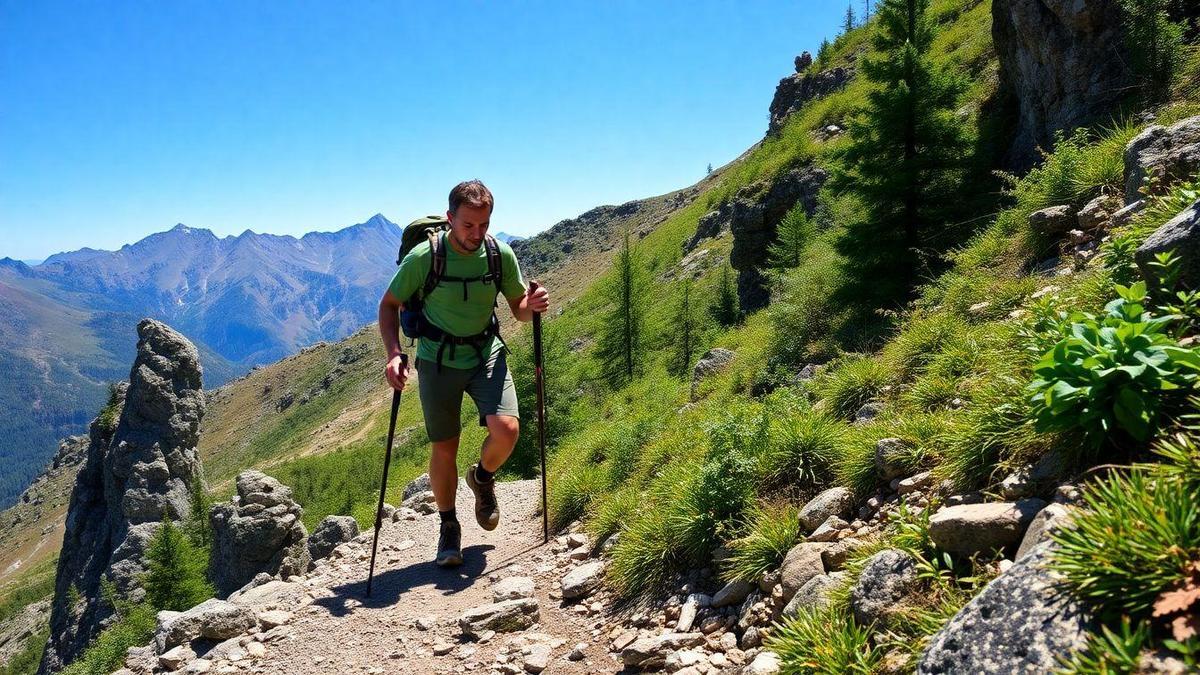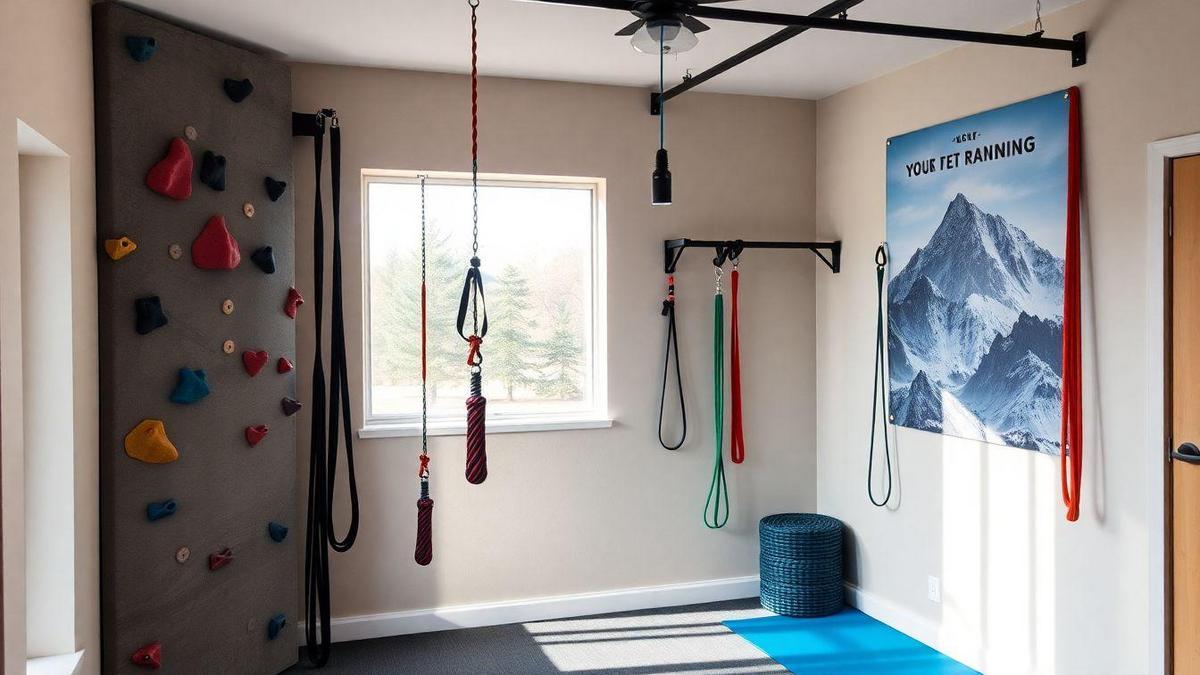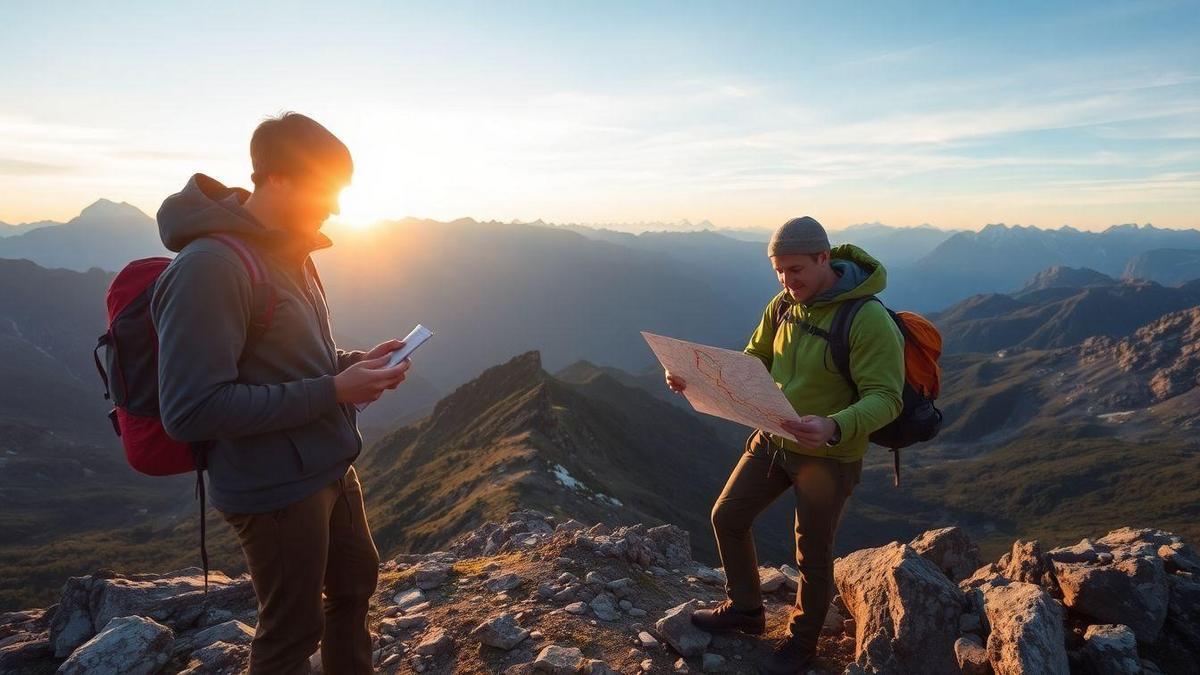
Understanding Balance Techniques for Steep Mountain Paths
The Importance of Hiking Stability
When you’re hiking up steep mountain paths, stability is key. It helps you stay on your feet and keeps you safe from falls. Think of it like balancing on a tightrope; every step you take needs to be steady. If you wobble, you might lose your balance. That’s why hiking stability matters so much. It allows you to enjoy the journey without worrying about slipping or tumbling down.
Common Challenges on Steep Terrain
Steep paths can present various challenges. Here are some common obstacles you might face:
- Loose rocks: These can shift under your feet, making it hard to stay steady.
- Mud: Wet ground can be slippery and tricky to navigate.
- Inclines: Climbing steep sections can tire you out quickly.
- Narrow paths: You might feel cramped and unsure of where to step.
Each of these challenges can make your hike feel like an uphill battle. But don’t worry; you’re not alone in this!
How Balance Techniques Can Help You
Using balance techniques can make a world of difference on steep mountain paths. Here are some techniques for improving balance on steep mountain paths:
| Technique | Description |
|---|---|
| Widen your stance | Place your feet further apart for better balance. |
| Use trekking poles | They provide extra support and stability. |
| Focus on your core | A strong core helps you stay steady. |
| Look ahead | Keep your gaze focused on where you want to go. |
| Take small steps | Smaller steps can help you feel more secure. |
By practicing these techniques, you can feel more confident and secure as you climb. Imagine reaching the summit, feeling proud of your journey, and knowing that you conquered the challenges along the way.
Essential Foot Placement Strategies for Mountain Climbing
How to Position Your Feet on Steep Slopes
Climbing steep slopes can feel like a balancing act on a tightrope. You want to find your center of gravity and keep your feet steady. Here are some strategies to help you position your feet better:
- Step Flat: Try to place your foot flat on the surface for more grip and stability.
- Use Your Toes: For extra support, especially on rocky paths, use your toes to push against the ground.
- Keep Your Knees Bent: This lowers your center of gravity and helps you stay balanced.
Tips for Navigating Rocky Surfaces
When you’re on rocky surfaces, it’s important to be careful. Here are some tips to make it easier for you:
- Look Ahead: Always watch where you’re stepping to avoid loose rocks and maintain steadiness.
- Choose Your Path Wisely: Find the most stable rocks to step on and avoid small, wobbly stones that could roll under your feet.
- Use Your Hands: Don’t hesitate to use your hands for support. Grabbing onto a rock or ledge can help you maintain balance.
The Role of Footwear in Foot Placement
Your choice of footwear is key to how well you climb. Here’s how the right shoes can help:
| Feature | Benefit |
|---|---|
| Grip | Prevents slipping on steep slopes. |
| Support | Reduces foot fatigue. |
| Flexibility | Allows natural foot movement. |
Wearing the right shoes makes a world of difference. They help you feel more secure and confident while climbing.
Core Strength Exercises to Enhance Your Balance
Key Exercises for Building Core Strength
Building core strength is like laying a solid foundation for a house. Without it, everything else can crumble. Here are some key exercises to help you strengthen your core:
- Planks: Hold your body in a straight line, resting on your forearms and toes. Start with 20 seconds and work up to a minute.
- Bicycle Crunches: Lie on your back, bring your knees to your chest, and alternate bringing your elbow to the opposite knee. Aim for 10-15 reps.
- Russian Twists: Sit on the floor with your knees bent, lean back slightly, and twist your torso side to side. Try for 10 twists on each side.
These exercises help build the muscles that keep you steady, especially when you’re out on the mountain trails.
How Core Strength Affects Stability on Steep Paths
When you’re hiking on steep paths, your core plays a huge role in keeping you balanced. A strong core helps you maintain your posture and stability. Imagine walking on a tightrope—every little movement counts. If your core is weak, you might find yourself wobbling or even falling. A strong core means you can handle the challenges of uneven terrain, helping you shift your weight properly to navigate rocky or steep areas with confidence. It’s like having a safety net that keeps you grounded.
Simple Core Workouts You Can Do Anywhere
You don’t need a gym to build your core. Here are some simple workouts you can do anytime, anywhere:
| Exercise | How to Do It | Duration/Reps |
|---|---|---|
| Plank | Hold a straight position on forearms and toes | 20-60 seconds |
| Bicycle Crunches | Lie on your back and alternate elbow to knee | 10-15 reps |
| Russian Twists | Sit and twist torso side to side | 10 twists each side |
These workouts are quick and can fit into your daily routine. Whether you’re at home or on a break at work, you can sneak in a few minutes to build your core strength.
Terrain Awareness: A Key to Safe Hiking
Recognizing Different Types of Terrain
When you’re out hiking, knowing the terrain is just as important as packing the right gear. Different types of ground can change your experience in a heartbeat. For example:
- Rocky paths can be tricky. You need to watch your step to avoid slips.
- Mud and wet ground can make you lose your footing. It’s like walking on ice!
- Steep inclines might challenge your stamina and strength. You may feel like you’re climbing a wall.
- Flat trails are easier, but they can still hide roots or rocks that trip you up.
Understanding these types helps you prepare mentally and physically for what lies ahead.
How Terrain Awareness Improves Your Balance
Being aware of the terrain can significantly boost your balance. When you know what to expect, you can adjust your stance and movements. Here’s how:
- Anticipate changes: If you see a rocky area coming up, you can shift your weight to stay steady.
- Choose your steps wisely: On a steep path, take smaller, careful steps instead of large strides.
- Use your arms: They help with balance. When you’re on uneven ground, spread your arms out like a bird ready to take flight.
By being mindful of your surroundings, you can move with more confidence and grace.
Tips for Assessing the Trail Ahead
Before you start your hike, take a moment to assess the trail. Here are some handy tips:
| Tip | Details |
|---|---|
| Look for markers | Signs can indicate the difficulty ahead. |
| Check for reviews | Other hikers often share their experiences. |
| Observe the weather | Rain can make trails slippery. |
| Use a map or app | Get a sense of the terrain and elevation. |
By following these tips, you’ll have a better idea of what you’re up against. It’s all about being prepared!
Balance Training Drills to Prepare for Steep Paths
Effective Drills for Improving Your Balance
Climbing steep mountain paths can feel like an uphill battle. But don’t worry! You can boost your balance with some simple drills. These exercises help you stay steady on your feet, especially when the ground gets tricky. Here are some effective drills to consider:
- Single-Leg Stands: Stand on one leg for 30 seconds. Switch legs. You can make it tougher by closing your eyes!
- Heel-to-Toe Walk: Walk in a straight line, placing the heel of one foot directly in front of the toes of the other. This helps with coordination.
- Balance Beam Walk: Use a low beam or even a line on the ground. Walk across it slowly, focusing on keeping your balance.
Incorporating Balance Training into Your Routine
Finding time for balance training can be easy! Here’s how you can fit it into your daily life:
- Morning Routine: Start your day with a few single-leg stands while brushing your teeth.
- Break Time: Use your work breaks to practice heel-to-toe walking in a safe space.
- Evening Wind Down: Before bed, try some gentle stretches that focus on your legs and core.
Fun Activities to Enhance Your Balance Skills
Balance training doesn’t have to be boring! Here are some fun activities that can help improve your skills while keeping things lively:
| Activity | Description |
|---|---|
| Yoga | Poses like Tree Pose can really test your balance. |
| Dance | Whether it’s ballet or hip-hop, dancing is great for balance! |
| Martial Arts | Many martial arts focus on balance and coordination. |
These activities make training feel less like a chore and more like a good time.
Injury Prevention Tips for Mountain Climbers
Common Injuries on Steep Mountain Paths
When you tackle steep mountain paths, you might face a few common injuries. These could include:
- Sprains: Twisting an ankle can happen easily on uneven ground.
- Strains: Overworking your muscles can lead to pain and discomfort.
- Blisters: Long hikes can cause friction on your feet, leading to painful blisters.
- Knee Pain: Walking downhill puts extra pressure on your knees.
Understanding these injuries helps you prepare better. Remember, even the toughest climbers can face these challenges.
How to Avoid Injuries While Hiking
Avoiding injuries is key to enjoying your mountain climbing adventure. Here are some helpful tips:
- Warm-Up: Always stretch before you start your hike.
- Stay Hydrated: Drink plenty of water to keep your body functioning well.
- Wear Proper Gear: Good shoes and clothing can make a big difference.
- Take Breaks: Don’t rush. Listen to your body and rest when needed.
Using these strategies can keep you safe and make your hiking experience much more enjoyable.
The Importance of Proper Posture and Grip Techniques
Maintaining proper posture and grip can protect you from injuries. Here’s why:
- Posture: Stand tall with your shoulders back. This helps distribute your weight evenly and reduces strain on your back and legs.
- Grip Techniques: Use your hands to help balance. Hold onto rocks or trees when needed to keep steady.
By focusing on these techniques, you can improve your balance and avoid falls. It’s all about staying aware of your body and how it moves.
Frequently Asked Questions
What are some Techniques for improving balance on steep mountain paths?
You can try stabilizing your stance, keeping your feet shoulder-width apart. This helps you feel more grounded and steady.
How can I use my arms to improve balance?
Your arms act like balance beams. Spread them out for more support while walking on steep paths.
Should I look at my feet while hiking?
No! Keep your eyes ahead. This helps you spot obstacles and maintain your balance better.
What type of shoes are best for steep paths?
Wear shoes with good grip. They provide traction and reduce slipping, making it easier to stay balanced.
Can practicing help improve my balance skills?
Absolutely! Regularly practicing on uneven ground can enhance your balance. Just a few minutes every day makes a difference.


